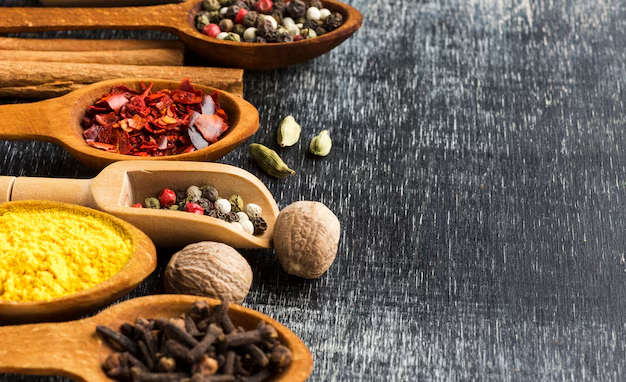Rich, subtle, and representative of centuries of cultural exchange, geographic variety, and tradition, Armenian food speaks volumes. Armenian cooking has roots dating way back in history, which have made it famous for its unique use of spices and ingredients in preparing culinary masterpieces even with the simplest dishes. The current blog post looks into the history, origin, and cultural significance of typical Armenian spices and flavors.
Traditional Armenian Spices: A Little History
Lying at the junction of the Silk Road, the formation of Armenian cuisine borrowed a lot from that. Passing traders carried exotic spices, herbs, and methods of cooking from Asia, the Middle East, and Europe. The permanent exchange gave richness to the Armenian cuisine and created a flavored blend of influences.
Not only the trade connections, but also the geography – leafy plains, green valleys, and mountainous terrain of Armenia-were generously endowed with a plethora of aromatic herbs and spices native to this very area. Indeed, according to ancient Armenian texts, a number of which comprised the recipe and medicinal treatises, aromatic seasonings in everyday life, apart from being savored for their great taste, occupied the leading positions in relation to health effects.
Key Spices in Armenian Cuisine
Several traditional Armenian spices and herbs are staples in Armenian kitchens, forming the basis for its traditional recipes:
Sumac
This tart, crimson spice is a staple of Armenian cuisine. Taken from the dried berries of the sumac shrub, it gives a nice tangy, almost citrus-like flavor to salads, kebabs, and soups. In the old days, sumac was treasured for its medicinal properties and was used as medicine for inflammation and digestion issues.
Coriander (Kashkash)
Coriander seeds are usually powdered into a fine texture for seasoning meat dishes, stews, and even bread. It has warm and nutty undernotes, is very important in Armenian cuisine, and is often used in combination with cumin to add flavor to dishes.
Cumin
Cumin is a basic spice, adding earthly, slightly pepper-like tastes to dishes, among them dolma and khashlama. It was brought to Armenian kitchens centuries ago by way of trading routes that linked Armenia with the Middle East.
Fenugreek (Chaman)
These are essential in the preparation of pastirma, a cured meat delicacy, and basturma, Armenia’s version of pastrami. The spice is strong, somewhat bitter with sweet overtones, and is a favorite spice to preserve meats.
Paprika
Known locally as ghoch tsitsak, paprika adds a smoky, sweet, or spicy element to everything from harissa-a wheat and chicken porridge to vegetables that have been grilled. Its use reflects Armenia’s interactions with surrounding areas, particularly Hungary and the Balkans.
Dried Mint
Dried mint is used in Armenian cuisine to add freshness to savory and sweet courses alike. Sprinkle it over yogurt-based appetizers or add it to soups for a hint of brightness.
Unique Flavors, Special Techniques: Herbs and Wild Greens
Besides spices, Armenian cuisine also depends a lot on fresh and dried herbs like tarragon, parsley, dill, and oregano. Wild greens like apor (wild sorrel) and kerook (wild thyme) are foraged from the countryside of Armenia and used in soups, salads, and savory pastries.
Spice Blends
The special use of spice mixes often handed down through generations and changing from region to region, gives one of the unique characteristics to Armenian cuisine. For example, sujuk’s spice mix-the very spicy includes fenugreek, allspice, cinnamon, and cloves, while ghapama, or a dish made out of pumpkin with a filling, has a sweet profile with cinnamon and nutmeg predominating.
Fermentation
Fermented ingredients, like tan- a yogurt-based drink, and pickled vegetables, also play their role. In this case, the process enhances flavor complexity- normally filled with spices such as dill and garlic.
Cultural Significance of Spices
For Armenians, spices are not only a means to cook but also a medium of heritage and memory. Most recipes are attached to religious feasts, family occasions, or seasonal events. For example, ghapama prepared during Christmas or the use of specific spices in zhingyalov hats during Lent reflect deep cultural and spiritual values.
Spices also tell their part of the story. Most Armenian proverbs refer to food and spices as carriers of wisdom. For example, “A house without bread is like a body without a soul,” where sustenance, seasoned by spices and herbs, even in the most basic forms of meals, turns into an experience.
The Modern Renaissance of Armenian Spices
Today, the Armenian spice trade has entered a phase of revival with world chefs and food aficionados discovering for themselves the great taste of Armenian dishes. Small producers in Armenia farm organic herbs and spices with an attentive eye toward maintaining traditions and appealing to contemporary consumers interested in green, high-quality foods.
This revival has also sent the diaspora communities running to rediscover their roots through food. Restaurants, food blogs, and cookbooks introduce Armenian spices to the world for continuity of this spice legacy.
As we are summing up
The spice and flavors of Armenian cuisine are much more than mere ingredients that link the past with the present and give respect to the strong, clever culture of Armenia. By tracing its very roots, we all appreciate more fully the art and history of every Armenian dish. Whether it is the sourness of sumac, the heat of coriander, or the earthiness of cumin, Armenian spices hold a tale that has been occurring in the mouths of people all over the world.









